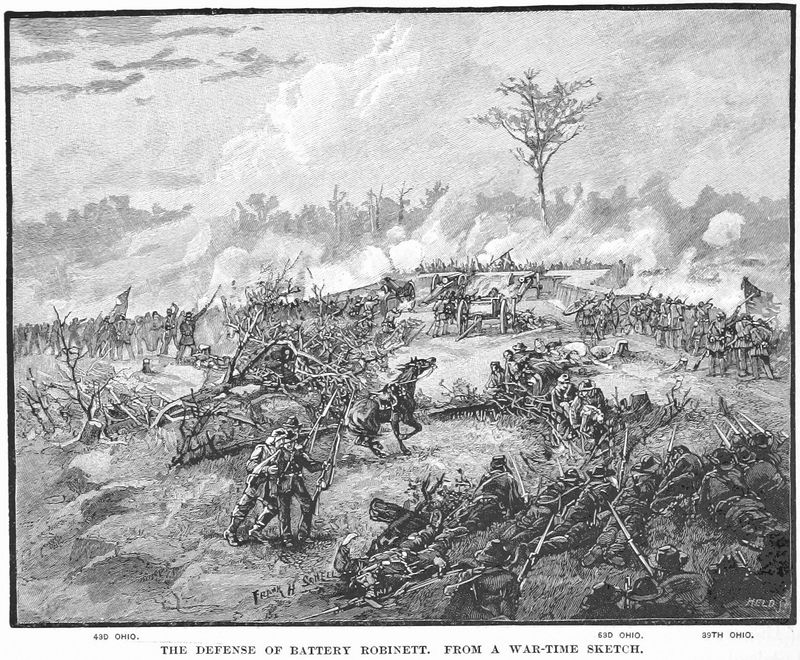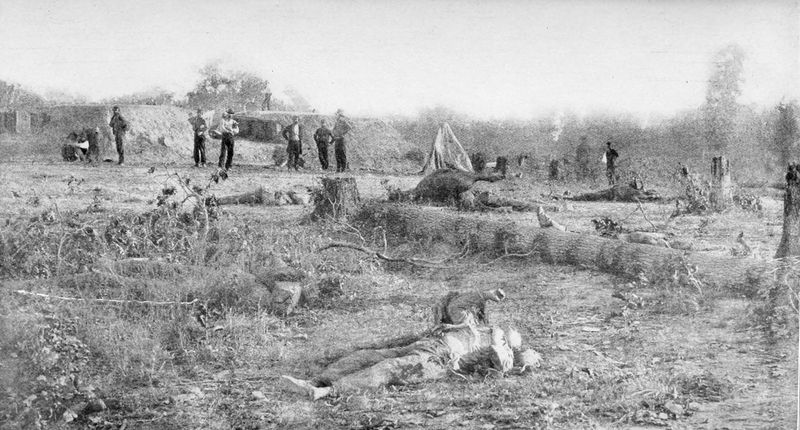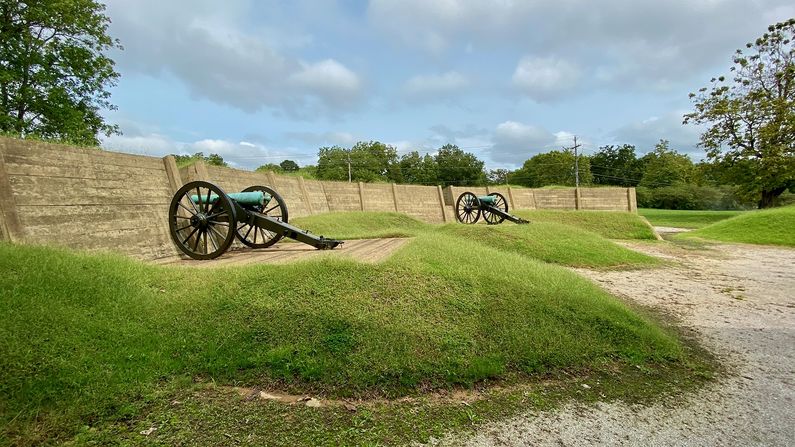Battery Robinett
|
HistoryBattery Robinett was a triangular lunette (three-sided field fort) with a double level of gabions topped with fascines. The approach to the battery was blocked by an obstructive Abattis and finally a ditch. A line of earthworks extended to the south of the battery to the railroad. Battery Robinett was armed with three 20-pounder cannon and manned by Company “C” of the 1st U.S. Infantry led by Lieutenant Henry C. Robinett.  During the Battle of Corinth on 4 Oct 1862 three brigades of Confederate Brigadier General Dabney H. Maury’s division attacked Battery Robinett in four columns. The Confederate attackers stormed the battery under heavy fire and when they had penetrated half-way through the abattis the battery gunners changed to grape and canister shot increasing the carnage but the attackers still reached the open ground in front of the battery. At this point, the battery gunners double charged the guns and the redoubt became enveloped in smoke and flame. Confederates seized the parapet at great cost and drove the defenders from their guns. Lt. Robinett and 13 of his 26 men were casualties in the battery. In desperation, Union Captain George Williams fired two shells from nearby Battery Williams into the Confederates overrunning Battery Robinett, stalling their attack long enough to allow Union reinforcements to make their way to the battery. In his official report Capt. Williams described the attack on Battery Robinett:
 Confederate Colonel William P. Rogers, commanding the 2nd Texas Infantry, and a small group of some sixteen men including Captain Foster survived the initial assault and briefly occupied the battery just as some 1500 Union reinforcements came into view. Colonel Rogers and Captain Foster attempted to signal their surrender with white handkerchiefs but the firing had begun and it was too late. Of that small group, only one survived, J.A. McKinstry, who was a private in Company D, Forty-second Alabama regiment, and it is from his account that the above was gleaned. Photographs of the small Confederate group were made the following morning where they fell. One account says that "An artist was there taking a picture of the scene, while over a thousand persons had gathered there to witness the sight."  After the battle, it was said that the Confederate dead lay piled from three to seven deep in front of the battery and that for a hundred feet the bodies lay so close it was almost impossible to walk between them. The Confederate dead were buried in a common grave except for Colonel Rogers who was buried in a separate grave with military honors at the direction of the Union General William S. Rosecrans (Cullum 1115). General Rosecrans said of Colonel Rogers at the scene of his death that:
Some elements of the Confederate attack penetrated into the town of Corinth but became disorganized and the attack ultimately failed. The battery commander Lt. Robinett survived the battle and the war and remained in the Army after the war as a Brevet Major. He and his men were widely acclaimed for their actions at Corinth. He had sustained a serious head wound during the defense of Battery Robinett that gave him much pain. He had a troubled career after briefly serving on General Grant's staff he was twice court-martialed and removed from the service but the decisions were reversed by authorities in the War Department. After his fiance died he took his own life at Jackson Barracks, New Orleans on 22 Apr 1868.
Current StatusThe Corinth Civil War Interpretive Center is a unit of the Shilo national Military Park and it includes some of the important sites of the Corinth battlefield including a partial replica of Battery Robinett attached to the Interpretive Center. A tall white marble shaft near the Interpretive Center is a monument to Confederate Colonel William P. Rogers who led the attack on Battery Robinett. The monument was unveiled in Corinth on 15 Aug 1912 along with markers to the unknown dead of Colonel Rogers’s charge.
See Also: Sources:
Links:
Visited: 14 Sep 2020
| |||||||
